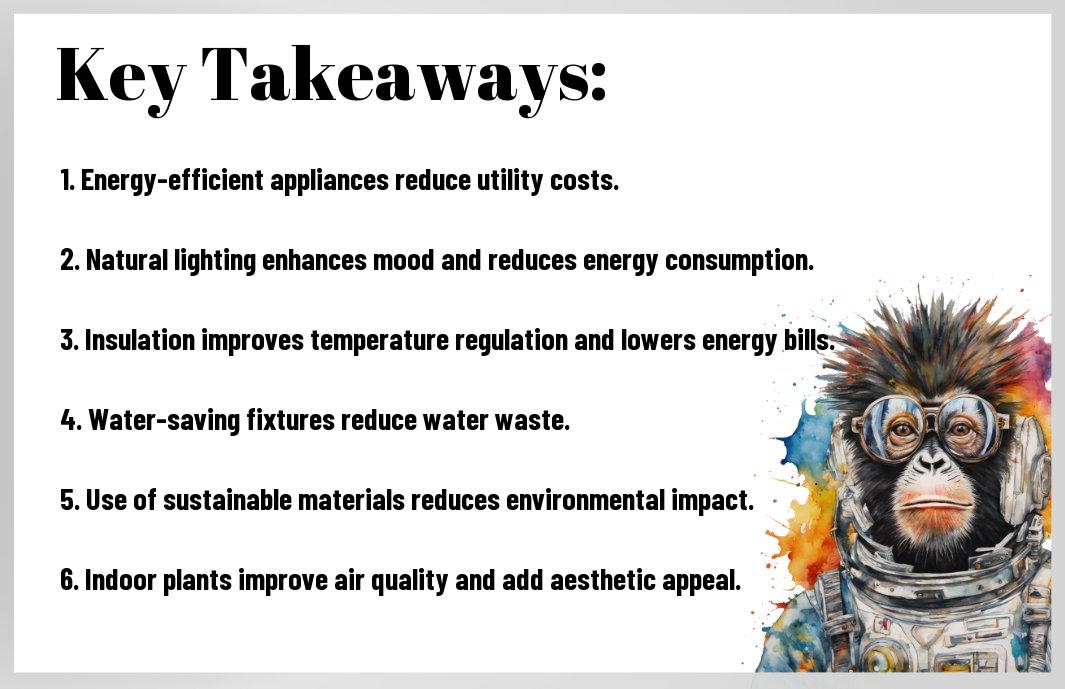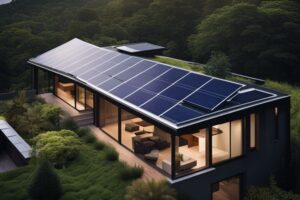Over the past few years, the push for eco-friendly living has become more prevalent than ever. One way to contribute to this movement is by incorporating eco-friendly features into your home design. Not only do these features help the environment by reducing energy consumption and waste, but they can also enhance the overall functionality and aesthetic of your living space. In this blog post, we will explore the various ways in which eco-friendly features can improve your home design and make your living environment healthier and more sustainable.

Energy Efficiency in Home Design
Insulation and Home Energy Conservation
You can significantly enhance the energy efficiency of your home design by focusing on insulation and energy conservation measures. Proper insulation, such as spray foam, fiberglass, or cellulose, can reduce heat transfer and help maintain a consistent indoor temperature. This can lead to lower energy consumption for heating and cooling, ultimately reducing your carbon footprint and energy bills.
Solar Panels and Renewable Energy Solutions
Design your home with the integration of solar panels and other renewable energy solutions to harness the power of the sun and reduce reliance on non-renewable energy sources. Solar panels can convert sunlight into electricity, providing a sustainable and environmentally friendly energy source. By investing in solar panels, you can not only reduce your carbon emissions but also potentially save money in the long run by lowering your electricity bills.
Sustainable Materials and Resources
Reclaimed and Natural Construction Materials
Any environmentally conscious homeowner looking to enhance their home design should consider utilizing reclaimed and natural construction materials. These materials, such as reclaimed wood, recycled glass, and natural stone, not only add a unique aesthetic to your home but also help reduce the demand for new resources and minimize waste. Incorporating these sustainable materials into your home design can significantly lessen your environmental impact and promote a more eco-friendly lifestyle.
Water Conservation Fixtures and Systems
Materials like low-flow faucets, dual flush toilets, and rainwater harvesting systems are imperative components of water conservation fixtures and systems in sustainable home design. These fixtures and systems are designed to reduce water consumption without compromising performance, helping homeowners conserve this precious resource and lower their utility bills. Investing in water-saving technologies is not only beneficial for the environment but also for your wallet in the long run.
Indoor Air Quality and Natural Light
Ventilation Solutions and Non-Toxic Materials
NonToxic Ventilation is critical for maintaining good indoor air quality in your home. Proper ventilation solutions, such as exhaust fans and air purifiers, can help remove pollutants and improve air circulation. Choosing non-toxic materials for your furnishings and finishes is also vital to avoid harmful off-gassing chemicals. Opt for low-VOC paints, formaldehyde-free furniture, and natural flooring options to promote a healthier indoor environment for you and your family.
Maximizing Natural Light Through Design
Design Harnessing natural light not only reduces the need for artificial lighting but also has a positive impact on health and well-being. Strategically placing windows, skylights, and glass doors can significantly increase the amount of natural light in your home. Additionally, using light colors for walls and reflective surfaces like mirrors can help bounce light around the space. Consider incorporating light wells or open floor plans to allow light to penetrate deep into the interior of your home, creating a brighter, more inviting atmosphere.
To truly enhance your home design with eco-friendly features, it is crucial to prioritize indoor air quality and natural light. By implementing ventilation solutions and using non-toxic materials, you can create a healthy, sustainable living environment for you and your loved ones. Maximizing natural light through thoughtful design choices not only reduces energy consumption but also promotes a sense of well-being and connection to the outdoors. Make these elements a priority in your home design to enjoy a space that is both beautiful and environmentally conscious.
Landscaping and Outdoor Living
Native Plants and Xeriscaping
Not only do native plants require less water and maintenance, but they also promote biodiversity and attract local wildlife to your outdoor living space. Xeriscaping, which involves using drought-tolerant plants and minimizing water usage in landscaping, can significantly reduce water consumption and maintenance costs.
Creating Eco-Friendly Outdoor Spaces
To create eco-friendly outdoor living spaces, consider incorporating sustainable materials such as reclaimed wood, recycled plastic furniture, and natural stone. Planting trees strategically can provide shade, reduce energy costs, and improve air quality. Installing a rainwater harvesting system can help collect and reuse water for irrigation, reducing reliance on municipal water sources.
Understanding the benefits of incorporating native plants and xeriscaping in your landscaping can not only reduce your environmental impact but also save you time and money in the long run. By choosing sustainable materials and implementing water-saving strategies, you can create a beautiful outdoor space that enhances your home’s design while being environmentally friendly.
Summing up
On the whole, incorporating eco-friendly features into your home design not only benefits the environment but also enhances the overall functionality and aesthetics of your living space. From reducing energy consumption to improving indoor air quality, these sustainable elements can make a significant impact on your daily life. By carefully selecting materials, appliances, and design strategies that prioritize sustainability, you can create a more efficient, healthy, and beautiful home for you and your family to enjoy for years to come.
